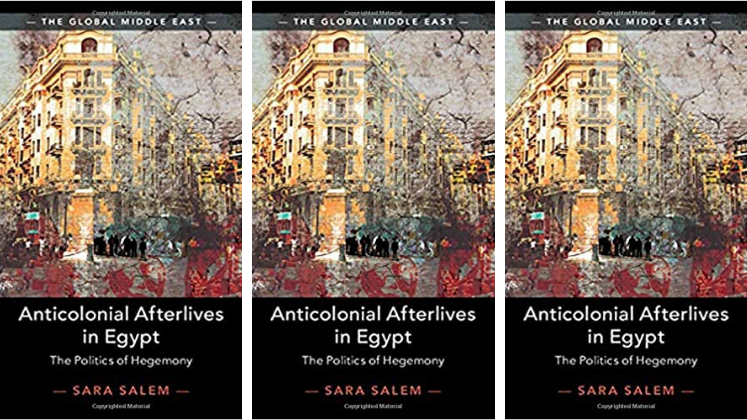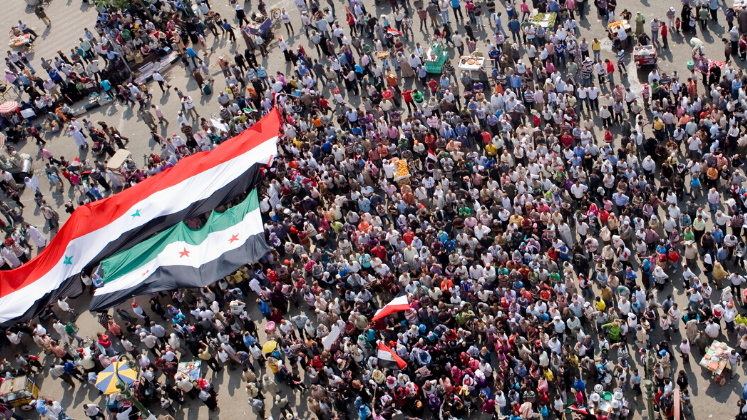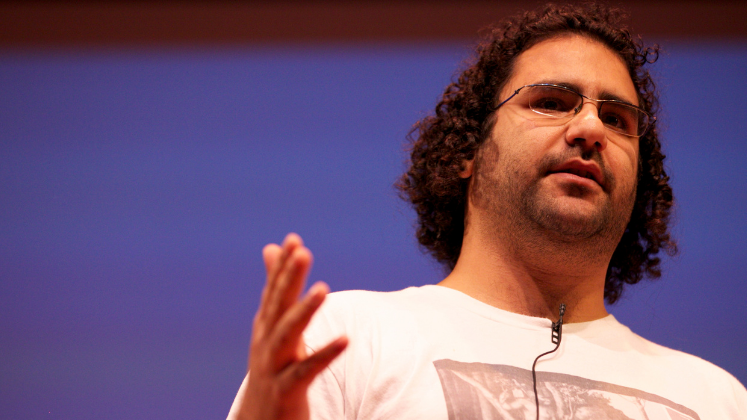In Bread and Freedom: Egypt’s Revolutionary Situation, Mona El-Ghobashy offers a detailed account of the complex period between Egypt’s 2011 revolution and the election of President el-Sisi in 2014. This award-winning book adds a new perspective by urging readers to view revolutions and their aftermath as unpredictable rather than predetermined events, writes Dunia Essam.
Bread and Freedom: Egypt’s Revolutionary Situation. Mona El-Ghobashy. Stanford University Press. 2021.
 Find this book (affiliate link):
Find this book (affiliate link):![]()
Revolutions have an intriguing feature: they appear unlikely, if not impossible, before they occur. Afterwards, they appear unavoidable, the natural progression of a previously initiated activity. Looking back eleven years, what did we not fully comprehend about Egypt during the late-Mubarak era that enabled the 25 January revolution? What do we still not know about the uprising and its aftermath?
In Bread and Freedom, Mona El-Ghobashy offers the reader a detailed model for understanding the complex period of the 25 January revolution that took place in 2011. El-Ghobashy describes the years of turmoil in Egypt between the 2011 revolt against President Hosni Mubarak and the election of Abdel Fattah el-Sisi in 2014. She makes a case against the dual temptations of determining the exact origin of the revolution and foreseeing a clear result.
El-Ghobashy insists on scrutinising the ‘battle to rearrange power within the state’ as it actually occurred while emphasising the ambiguity of those years — the ‘revolutionary situation’ of her subtitle. This idea focuses on the political conflict that occurred between the old regime’s first collapse and the establishment of the new one.
The book’s central purpose is to demonstrate how the unanticipated revolt created a number of possibilities for Egypt’s future governance, showing how it ended Mubarak’s plans to pass the reins of power to his son. El-Ghobashy centres her analysis on uncertainty and concentrates on what political institutions appear to be under perplexing conditions.

Image Credit: Crop of ‘Tahrir Square’ by Hossam el-Hamalawy licensed under CC by 2.0
El-Ghobashy divides her book into six chapters, elaborating how the revolution in Egypt developed into a ‘non-revolutionary outcome’ (46). In Chapter One, the author shows that knowing how things turned out causes us to forget the numerous circumstances that contributed to significant events. What if Mohamed Bouazizi’s demonstration in Sidi Bouzid had remained a hyper-local Tunisian disturbance? What if 25 January hadn’t been a holiday that allowed people to participate in political protests? What would have happened if Suez police had not murdered three protesters that day, departing from the violent but nonlethal protest policing that had grown under Mubarak? What if office and factory workers had remained at their workstations, dismissing the Tahrir opposition movement as unimportant to their concerns? El-Ghobashy takes the reader behind the scenes to the actual fights of 2011, challenging all you thought you knew about revolutionary movements, a rare treat.
Chapter Two discusses the increasing challenges to Mubarak’s government up to 2011, with a focus on elections, legal disputes and demonstrations in the streets. The government’s careful management of public political opposition was not an inherent characteristic of Mubarak’s regime but developed through repeated confrontations, bargains and settlements, rather than outright bans.
Chapter Three is devoted to addressing the uncertainty following Mubarak’s overthrow. It examines how the generals established their claim to power and how, following a brief period of public celebration and confidence in the military as ‘protectors of the revolution’, that claim came to be fiercely opposed (104).
In this chapter, El-Ghobashy stresses ‘revolutionary situations’, stating that the concept came from a strange mash-up of American socialists and Russian revolutionary activists. Lenin made a point of stating that ‘not all revolutionary scenarios give rise to a revolution’ where state power is transferred. Such transitional times when a stable political order is overthrown are ripe with opportunities for change, but these are not inevitabilities, according to Lenin the revolutionary strategist. El-Ghobashy states that the 2011 uprisings in Egypt, Tunisia and Yemen raised an interesting problem, not because they established counter-revolutionary governments in the form of revolutionary organisations — which would have made them true revolutions in Lenin’s sense — but rather because they created revolutionary situations.
Chapters Four and Five discuss how the plans for handing over control to civilians during the first half of 2012 represented the peak of turmoil in Egypt’s revolution. These chapters recap Mohamed Morsi’s turbulent one-year presidency, highlighting how the first civilian president from the Freedom and Justice Party (FJP) tried to establish a stronghold against rising issues. El-Ghobashy finds a new bipolar alliance between the Morsi government and a variety of elite and popular groupings that went beyond a binary between Islamists and secularists.
In her last chapter, El-Ghobashy addresses ‘state prestige’ and discusses how Egypt’s revolutionary scenario ended in a non-revolutionary manner, with the Mubarak regime’s military rump re-conquering the state and establishing a new counter-revolutionary rule. The chapter argues that the counter-revolution is an unexpected blend of existing autocratic techniques of power and new administrative and ideological frameworks, rather than an updated version of Mubarakism or a clear rejection of revolution.
Bread and Freedom is particularly strong on political history as it is well-written and thoroughly researched with a remarkable mastery of detail and an uncommon command of social science theory. El-Ghobashy provides an interesting interpretation of the Egyptian revolution as she resurrects an old concept while forcing the reader to reconsider revolutions by emphasising uncertainty.
The author begins Chapter One with a line that establishes the tone for much of the book: ‘The 2011 uprising was the biggest accident in Egyptian political history, anticipated neither by its champions nor its adversaries. Every step during the Eighteen Days was marked by uncertainty’ (40). These themes of surprise and confusion permeate the entire narrative — of how ambiguity may potentially be the name of the game. El-Ghobashy wants the reader to notice that people have a tendency in retrospect to think that whatever happened simply happened, which is a common hindsight bias in all social analysis. El-Ghobashy goes against the grain of that bias and look at the real core of ‘uncertainty’ to experiences of the uprising, many of which were ephemeral.
Instead of evading these events, El-Ghobashy constructs an analytical narrative, including both the events that we remember but also the ones that have been completely brushed out, partly because they are so dense but also because they are so small. El-Ghobashy makes Bread and Freedom one of the few books that shows how these small events make sense of the revolution, bringing them in systematically and providing an analytical narrative.
The remarkable book Bread and Freedom provides a thorough explanation of the 2011 Egyptian revolution, which was one of the most interesting, if controversial, periods in contemporary Egyptian politics. El-Ghobashy’s argument supports her claim that the idea of a revolutionary situation creates uncertainty. She thus urges the reader to view revolutions and their aftermath as unpredictable conflicts rather than as predetermined events. The book would also add a new perspective for the people who followed and lived the revolt and its aftermath on a daily, if not hourly, basis.
Note: This review gives the views of the author, and not the position of the LSE Review of Books blog, or of the London School of Economics and Political Science. The LSE RB blog may receive a small commission if you choose to make a purchase through the above Amazon affiliate link. This is entirely independent of the coverage of the book on LSE Review of Books.






